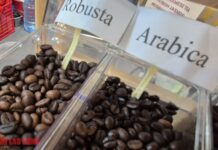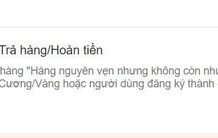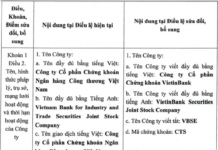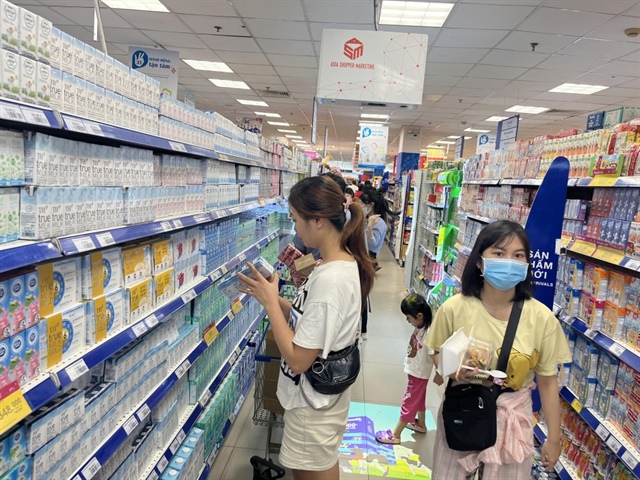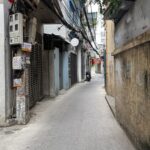The Ministry of Industry and Trade recently submitted to the Government a draft proposal to develop a decree regulating the determination of goods produced in Vietnam.
What does it mean to be “Made in Vietnam”?
According to the Ministry of Industry and Trade, for domestically produced goods, including those made from imported raw materials and then circulated domestically, there are no regulations on when they can be labeled as “Product of Vietnam” or “Made in Vietnam.”
This has caused confusion for many organizations and individuals who want to accurately indicate the country of origin and source on product labels for goods circulated within the country. It also lacks a legal basis to guide the determination of whether a company’s products are allowed to be labeled as made in Vietnam.
A representative from Kem Nghia Joint Stock Company stated that in the past, the company imported some products from South Korea and India for finishing and packaging but were unsure if they should label them as “Made in Vietnam.” As a result, the company sent a document to the Department of Industry and Trade in Ho Chi Minh City and related units for guidance.
According to the representative of Kem Nghia, before 2019, the Ministry of Industry and Trade had drafted a circular regulating the determination of products and goods of Vietnam or made in Vietnam. However, by 2023, the document had not been officially issued.
While waiting for official guidance, the company referred to Decree 31/2018 and Circular 05/2018. Subsequently, the Ministry of Industry and Trade replied to the company that Decree 31/2018 and Circular 05/2018 stipulate the origin of goods for import and export only.
Regarding the circular regulating the determination of goods made in Vietnam, the Ministry of Industry and Trade is still working on it, and it has not been officially issued… The determination and indication of the origin of goods will be decided by the companies themselves based on the current regulations on the origin of goods.
Ms. Pham Thi Ngoc, Vice Secretary General of the Vietnam Dairy Association, said that since 2019, the dairy industry has provided feedback on the draft circular regulating the determination of products and goods as products and goods of Vietnam or made in Vietnam, compiled by the Ministry of Industry and Trade.
According to the draft, the indication of “Made in Vietnam” on dairy products manufactured in Vietnam has raised many concerns for businesses.
Currently, dairy products produced in Vietnam are mainly in the form of powdered milk and liquid milk. For powdered milk, companies usually import raw materials from countries like New Zealand, the USA, Australia, and France.
However, to create nutritional products suitable for the nutritional status of Vietnamese children and the health conditions of other demographic groups, dairy companies must invest in research and formulas. They even hire domestic and international experts, resulting in a high level of intellectual input. So, can these products be labeled as “Made in Vietnam”?
Moreover, for liquid milk, such as fresh and sterilized milk, some companies have invested in dairy farms in neighboring countries like Cambodia and Laos and then bring the raw materials to Vietnam, or they import dairy cows from the USA for breeding in Vietnam.
“So, for these final dairy products manufactured in Vietnam, should they be labeled as ‘Made in Vietnam, Laos, Cambodia, or the USA, Australia, etc.?’ This is a significant concern for the dairy industry,” said Ms. Ngoc.
“We sincerely hope that if the Ministry of Industry and Trade continues to propose to the Government to develop a decree on this issue, the concerns of the dairy industry will be addressed. This will enable the sustainable development of the industry and provide more opportunities in the international market,” she added.
|
The Ministry of Industry and Trade stated that, given the above realities, there is an urgent need to issue legal documents stipulating criteria for businesses to accurately determine goods produced in Vietnam. Therefore, the Government’s decree will specifically regulate that goods will be considered made in Vietnam if they meet one of the following criteria: Goods with a purely Vietnamese origin, goods produced in Vietnam from entirely Vietnamese raw materials, or goods that undergo the final processing or manufacturing stage in Vietnam, resulting in a fundamental change in their nature. The decree will also specify criteria for cases where goods undergo the final basic processing or manufacturing stage in Vietnam, including changes in commodity codes, percentage of value, or specific processing stages. |
 |
The need for quick issuance of criteria
Attorney Nguyen Minh Huong, Head of A Hoa Law Office and Vice President of the Vietnam Intellectual Property Association, said that Vietnam’s current regulations on the origin of goods have some shortcomings.
“We encountered a case where a company imported packaging and raw materials for cosmetics from China and then packaged them in Vietnam. All the trademarks were in foreign languages and registered with Vietnamese authorities.
They then advertised the products as imported, while consumers, seeing the foreign language trademarks, assumed they were foreign products and were willing to pay a higher price. This has created difficulties for legitimate domestic manufacturers,” Attorney Huong explained.
According to Attorney Huong, Decree 43/2017 and Decree 111/2021 stipulate that businesses must indicate the origin of goods and do so truthfully and accurately. However, there is a lack of clarity on when to use terms like “produced in,” “manufactured in,” “packaged in,” or “labeled in,” leaving many businesses unsure of how to label their products.
Economist, Assoc. Prof. Dr. Dang Trong Thinh, recalled that about five years ago, he had also suggested the need for specific regulations on which goods could be labeled as “Made in Vietnam” for domestic consumption. For example, if the domestic content requirement is set at 40% or 100% for a product to be labeled as “Made in Vietnam,” what about goods from foreign-invested enterprises that are only assembled in Vietnam with a low value addition in the country? Should they be allowed to use the “Made in…” label? It’s a challenging decision.
“On the other hand, if the domestic content requirement is set lower, there is a risk of foreign goods disguising as Vietnamese products, which has already happened. Therefore, we need clear regulations, and the Ministry of Industry and Trade’s proposal to develop a legal document is timely,” said Dr. Thinh.
 |
A circular is sufficient; there is no need for a separate decree
Attorney Huong believes that since the Ministry of Industry and Trade has not issued criteria for determining “Made in Vietnam” goods for the domestic market for over five years, it is necessary to quickly provide a definition and then establish relevant criteria.
Especially once the criteria are established, the state needs to set appropriate tax rates. For instance, products with high technology and innovation inputs should receive more significant tax incentives to encourage businesses to invest in technology and innovation.
Attorney Huong also mentioned that the Law on Consumer Protection 2023 allows consumers the right to know the origin of goods, but in reality, it is challenging for people to access this information.
However, instead of developing a separate decree, the Ministry of Industry and Trade can issue a circular supplementing Decree 43/2017, which can include criteria for “products and goods of Vietnam” and “Made in Vietnam.”
Sharing the same view, economist Assoc. Prof. Dr. Dinh Trong Thinh said that it is unnecessary to develop a separate decree, as it would be a waste of state resources. The Ministry of Industry and Trade only needs to issue a circular supplementing Decree 43/2017 and Decree 111/2021 to clarify the use of “Made in Vietnam.” In terms of implementation, it is easier to make changes or amendments to a circular issued by a ministry than to a decree issued by the Government.
|
In 2023, the Ministry of Industry and Trade reported to the National Assembly’s Standing Committee that the regulation on “made in Vietnam” goods had been proposed by the Ministry to the Government since 2018 but had not been issued after five years. One of the reasons was the lack of a sufficient legal basis for the Ministry of Industry and Trade’s authority to issue a circular on “Made in Vietnam.” |
TU UYEN
Trần Tuấn Anh Resigns from Politburo with a Strong Sense of Responsibility
The Central Party Committee has agreed to allow Mr. Tran Tuan Anh to resign from his position as a member of the Politburo, member of the Central Party Committee for the 13th term.


